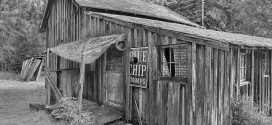As a result of long-term increases in rents and utility costs combined with falling renter incomes, one in four renters, or 10.1 million households, spends more than half their income on rent and utilities.
Another quarter of renters, 26.2 percent, spends 30 percent to 50 percent of their income on rent and utilities. Over the last decade the number of renters facing the burden of higer rents and utilities increased by one million households, according to a new study by the Harvard Joint Center for Housing Studies
In addition, more lower-middle income renters (56 percent, up from 38 percent) and more middle income renters (23 percent, up from 10 percent) are paying 30-50 percent of income for rent and utilities.
In the last decade, rental housing affordability problems went through the roof,” said Eric S. Belsky, Managing Director of the Harvard Joint Center for Housing Studies and an author of the study. “And these affordability problems are marching up the income scale. In real terms, it means more people have less money to spend on household necessities such as food, health care, or savings.”
As the economy begins to gain traction, rental housing is likely to lead the housing recovery as the troubled homeowner market and demographic trends push up the number of renters. Vacancy rates are falling and rents are showing a return to growth in many markets around the country. But what is good news for the housing industry could further erode rental housing affordability.
Since the mid 1990s, more than 700,000 rentals with federal subsidies tied to them were lost from the subsidized housing stock (either through demolition, or owner decision to abandon subsidies and turn the units into market-rate rentals). Meanwhile, nearly 12 percent of low-cost market-rate rentals existing in 1999 were demolished or otherwise permanently lost from the housing stock by 2009. With a median age of 38 years, the rental housing stock is older on average than it has ever been, raising concerns about continued high losses of this valuable resource.
“While the need for affordable rental housing is growing, the squeeze on government budgets is putting these much-needed programs in jeopardy,” said Chris Herbert, Director of Research, Harvard Joint Center for Housing Studies and a study co-author. “Investments to preserve existing assisted housing may be cost-effective. But the public sector can’t tackle this problem on its own.”
 RealEstateEconomyWatch.com Insight and Intelligence on Residential Real Estate
RealEstateEconomyWatch.com Insight and Intelligence on Residential Real Estate
